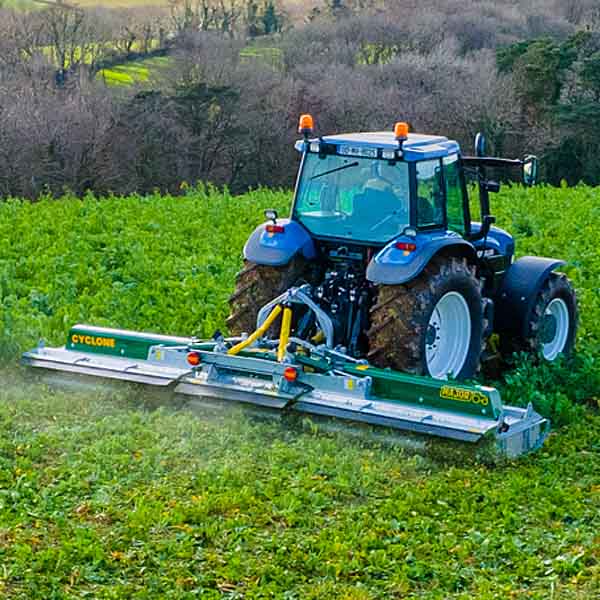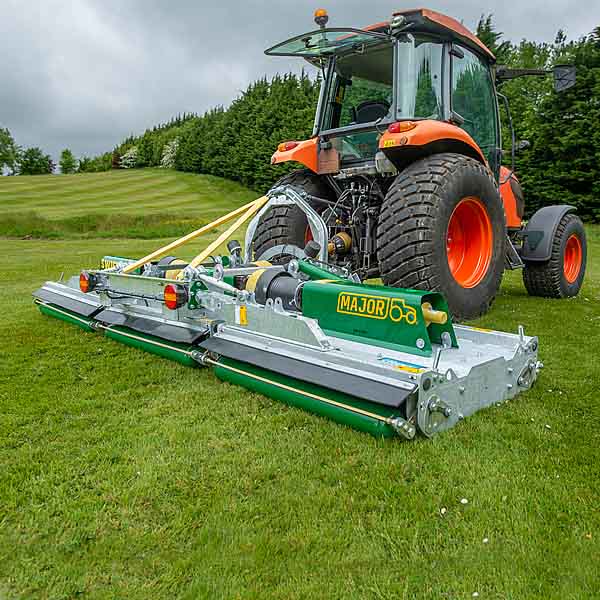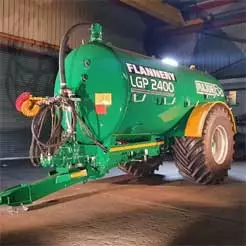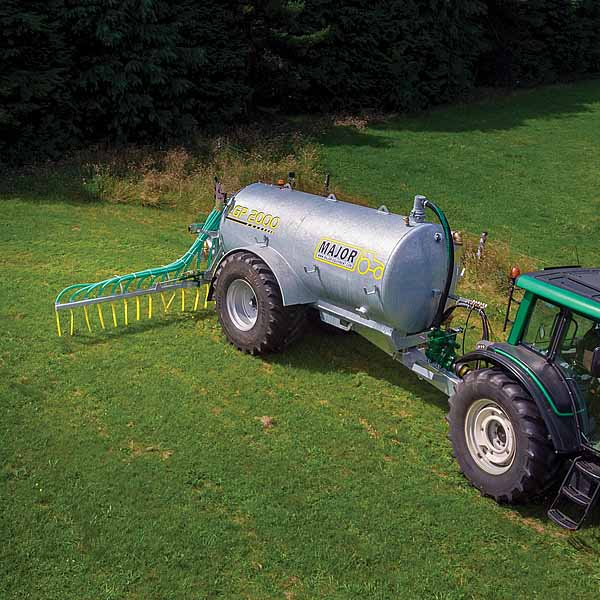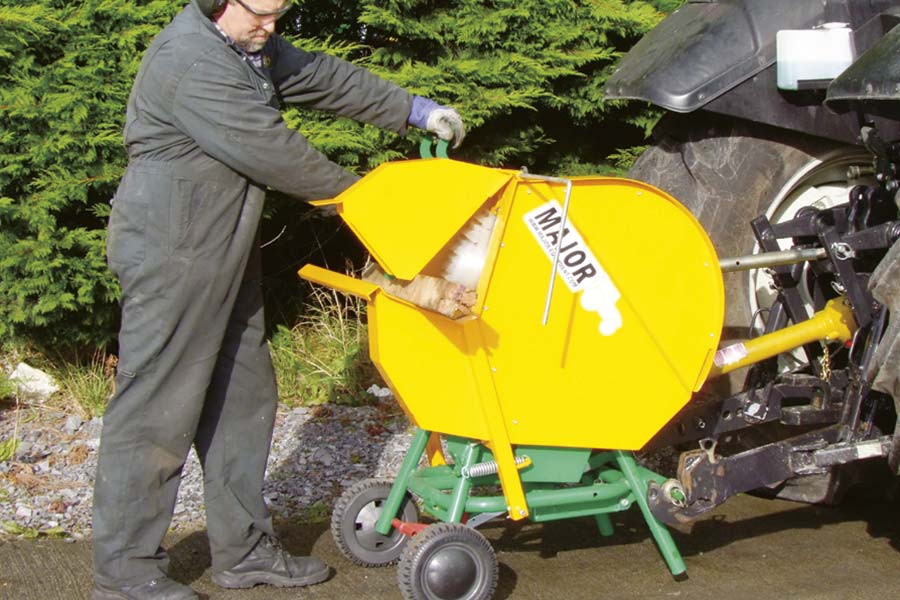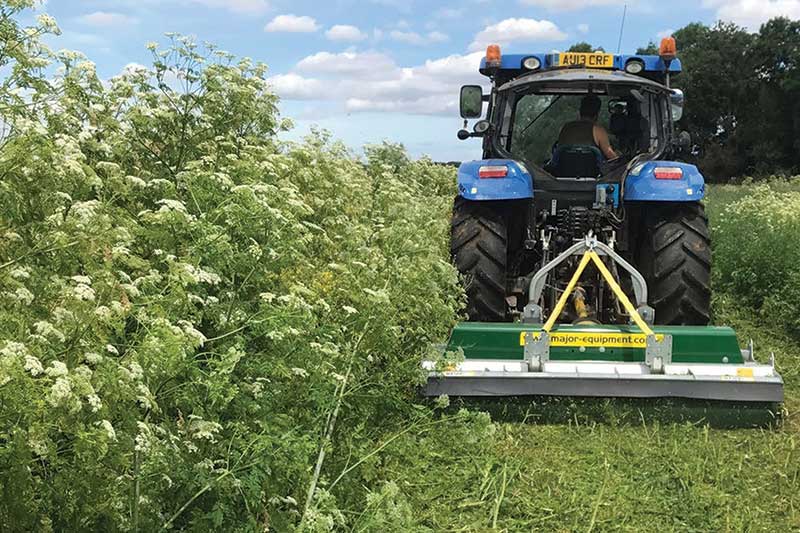
Field margins are increasingly seen as conservation areas for biodiversity improvement in arable farming. This priority habitat has plants sown deliberately to provide food and cover for pollinators, birds and other farmland wildlife to thrive or permanent grassland and meadow. Varying in width from 2-12m, these ecological focus areas are rarely sprayed with chemicals and therefore require an eco-friendly approach.
CS PRO: Powerful mowing in a compact size
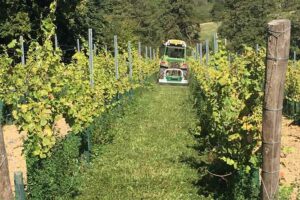
Hedgerows play an important role on farms by providing a natural boundary and a vital habitat and refuge for an abundance of wildlife. A minimum of 2m from the base of the hedgerow is the recommended width for this field margin.
Ongoing hedge management is necessary to preserve these important habitats; landowners need to follow restrictions on when hedges can be cut during the year. It is also important to cut ground vegetation every year to encourage growth of wild flowers as well as improve soil structure.
The CS PRO is the ideal implement for this sensitive area. Designed for dense vegetation and long grass, the CS PRO has a 1.5m working width which fits the narrow margins. The double-chop blade system cuts, shreds and mulches all kinds of material without leaving windrows, which is particularly useful on areas alongside hedges.
Only 20-hp is needed to power the single deck, which any compact tractor can handle. The gear-driven CS PRO uses less fuel than a comparable width flail mower and has lower maintenance requirements.
Made of high-performance Strenx structural steel and fully galvanised, the CS PRO is heavy duty yet light enough that it won’t mark the ground. This is important to reduce compaction that otherwise would deteriorate soil health.
Cyclone topper for all-around work
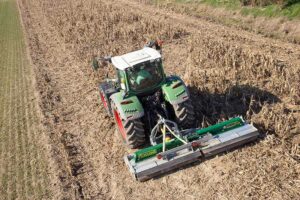
The MAJOR Cyclone mower doubles up as a grass topper and crop shredder, saving farming businesses time and resources. Designed for the most rugged working environments, the MAJOR Cyclone consumes less power and fuel than equivalent-sized flail mowers. The double-chop, “blender-style” blade system cuts, shreds, and mulches material up to 200mm (7.5 inches).
Peter and Sian Wombwell of Wombwell Farms uses a 4.2m Cyclone to manage stubble clearance, grass maintenance and margin control on some 3,000-acres bordering south Cambridgeshire and north Essex. “We run under the Higher Level Stewardship (HLS) scheme and are very conscious of being environmentally responsible,” commented Peter. “We bought the Cyclone about a year ago and it’s proven to be a very wise choice. It handles all kinds of material – we’ve used it on maize stubble, cover-crop, grassland, and one particularly difficult application down the tramlines in oilseed rape; it just whizzed over that!”
The 4.2m Cyclone is a folding wing topper with six rotors spaced just over two-feet apart, doubling the number of heads found in batwing mowers to ensure any material is cut cleanly and evenly spread. Made of high-performance Strenx 700 structural steel, these machines are lighter, yet significantly stronger than traditional steel. Field margins encompassing headlands suffer from soil compaction due to increased traffic, therefore using lighter weight machinery can mitigate some of the potential damage.
“It’s very strong, well built and easy to use. It cost less than a used batwing, has minimal maintenance costs, and takes a lot less fuel to power it,” Peter enthused. “The Cyclone is the perfect solution to all our topping and maintenance needs.”
Cut and collect for countryside conservation
Planted meadows are increasingly used to improve biodiversity on farms, however, it is not necessarily hands-free. Wildflower meadows require an annual maintenance programme to allow more desirable species to flourish and reduce the vigour of more rampant species that could encroach on crop fields.
It’s important to mow newly established meadow in the first year to encourage good root development of perennial flowers and grasses. Cut down to 5cm (2in) after six-to-eight weeks of growth and repeat every two months throughout the first summer.
Leave the clippings for a few days to allow seed to drop to the ground but then collect subsequent mowings to reduce soil fertility. MAJOR has two options of cut and collection machinery for this task.
The MAJOR Green Bee is a medium-duty flail collector which mows, chops, collects and rolls in one-pass. Heavy-duty flail blades can easily pulverise dense vegetation such as brush, gorse, grass and heather. Material is gathered into a 2.2 cubic metre collector. When full, the collector has a tipping height of 2.2m, suitable for loading onto a trailer or transported to a composting area. The cut-height can be simply adjusted between 12mm and 150mm.
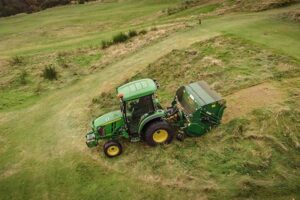
Scotscraig Golf Club in Scotland has been using the 1.8m MAJOR Green Bee to maintain native rough from invasive shrubs, brambles and trees while improving green sward without any chemical use. “There’s around seven to eight hectares of heavily infested rough which we use the MAJOR Green Bee to bring back into a manageable and more usable status,” comments Course Manager Chris Barnard. The Green Bee is well-built yet light enough to be fully mounted onto a John Deere compact tractor.
The golf club was recognised for prioritising eco-friendly management practices at the Golf Environment Awards 2020. “By not using sprays and chemicals, we have seen an obvious increase in wild flowers, insects and wild birds around the course,” comments Chris. “Last year we counted over forty different species of both resident and visiting birds and that’s a significant improvement on previous counts.”
The MJ2000 is a heavy duty flail collector designed for extreme conditions and suits conservation schemes and heathland management programmes. Ashdown Forest in Sussex uses the MJ2000 to mow 200-300 hectares of bracken and grasses each year. They previously used 6-foot or 15-foot toppers which left produce behind. With the MJ2000, they can cut and remove the material from the site in order to improve the heathen.
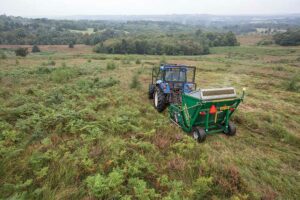
“The MJ2000 is the strongest of the cut and collect machines we investigated,” says Ashdown Forest Ranger Mike Payne. “It copes well with all of our terrain out here including ditches and embankments across slopes and general hills.” The easily adjustable height system is a winning feature: “We’re able to take bracken out of the heather areas without taking too much of the heather, which is the objective.”
There are many different options available to help you improve the natural environment on your farm. Contact us today to discuss a solution for your operation.

